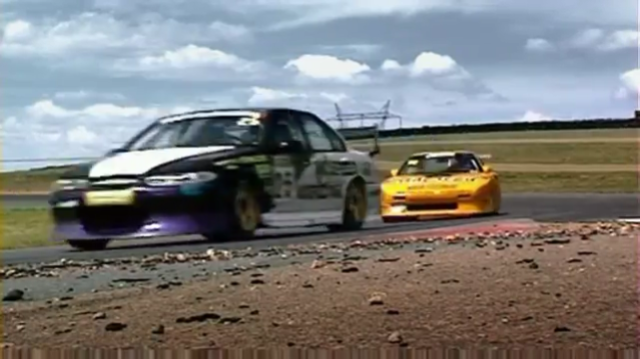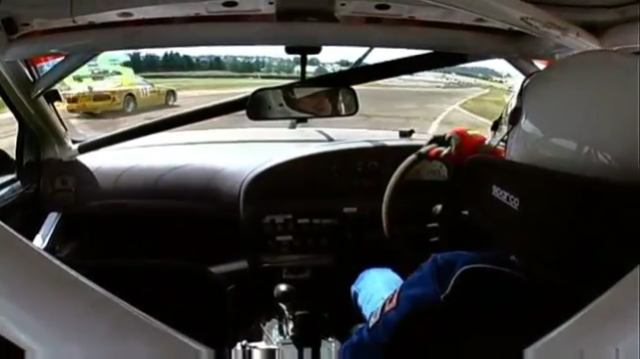There are endless flame wars on the subject of the V8 versus the rotary. Because of the trend in recent years, trackday enthusiasts as well as garden variety car nuts have seen the merit in swapping an eight-cylindered, piston-powered engine into the Mazda RX-7’s engine bay. The remarkable weight distribution is only altered slightly, and the rotary engine’s notorious (and often overstated) fragility and heat issues are gone.
However, there’s much to love about the little Wankel, as we get to see here. Yes, there’s a bit of staging for dramatic effect going on, but observing the two drivers in action it’s clear where the two motors shine and where they falter. Unfortunately, we don’t get the opportunity to see the same chassis used for comparative purposes, but thankfully, where the two stand out becomes obvious.
The Ford Falcon V8 Supercar has an abundance of torque and response, but also a longer wheelbase and a higher curb weight. The 12A-powered FC3S RX-7 is lighter, the chassis is tubed in front, and the weight distribution is always going to be a little better, but it lacks power. Even though it’s turbocharged, the power delivery, thanks to the rotary’s plentiful exhaust gasses and free-revving nature, is quite progressive. While one might think the V8 Supercar would have the advantage in the tractability department, but on a short circuit like Wakefield Park Raceway, it’s not certain.

Torque can offer a huge advantage in traffic if there’s enough grip available. Unfortunately, the Ford Falcon has a tough time applying the power.
Wakefield closely resembles a kart track with plenty of tight corners and little room to track out with. Nevertheless, as the race commences, it appears the big Ford’s torque helps it off the corner faster, even though the Mazda’s entry speed is clearly superior. What this says is that even with higher entry speed, the Falcon can often keep the Mazda at bay with great corner exits. Why then, does the RX-7 pull out such an astonishing lead once it nips by under brakes?
The answer can be seen from the Ford driver’s view just after the concedes the corner leading onto the front straight. If there were ever a clear depiction of why rotary-powered cars are such joys to drive, this would be it. Despite braking from quite a ways back and approaching on the inside line, the rotation the rotary offers – no pun intended – is remarkable.
Having the little 12A engine mounted further back and lower down than many piston engines allows the car to turn quite effortlessly, and still allocate enough weight towards the rear axle for decent traction off the corner. No time-sapping slides, no locked brakes and very little loss of momentum even with a compromised entry; just a smooth, gradual rotation and great speed.
That ability to turn and put traction down is seen from the onboard shots of the car, which seems to break away in the middle of the corner just enough to help turn the car, but without the rear stepping wildly out of place. Concurrently, the Ford doesn’t seem to turn in as fervently; a momentary lift is often required when the Mazda can go into the corner flat or nearly-flat.
Most importantly, that immense amount of torque and the poorer weight distribution mean the rear tires, less-loaded than the Mazda’s, break away more easily, and the slides seem to sap more momentum. While the Mazda seems nervous and edgy on the limit, it also has a little more grip, or can simply put the power down better.
If the track were longer, wider, and perhaps a bit smoother, things might’ve been very different. However, Wakefield does play to the Mazda’s strong points, and in addition the shorter wheelbase likely helps in the more technical sections. While the burly, sizable Ford did a fantastic job keeping in touch with the Mazda, it’s crystal clear that keeping the engine in the right location can often, depending on the circumstances, provide the winning formula.






















